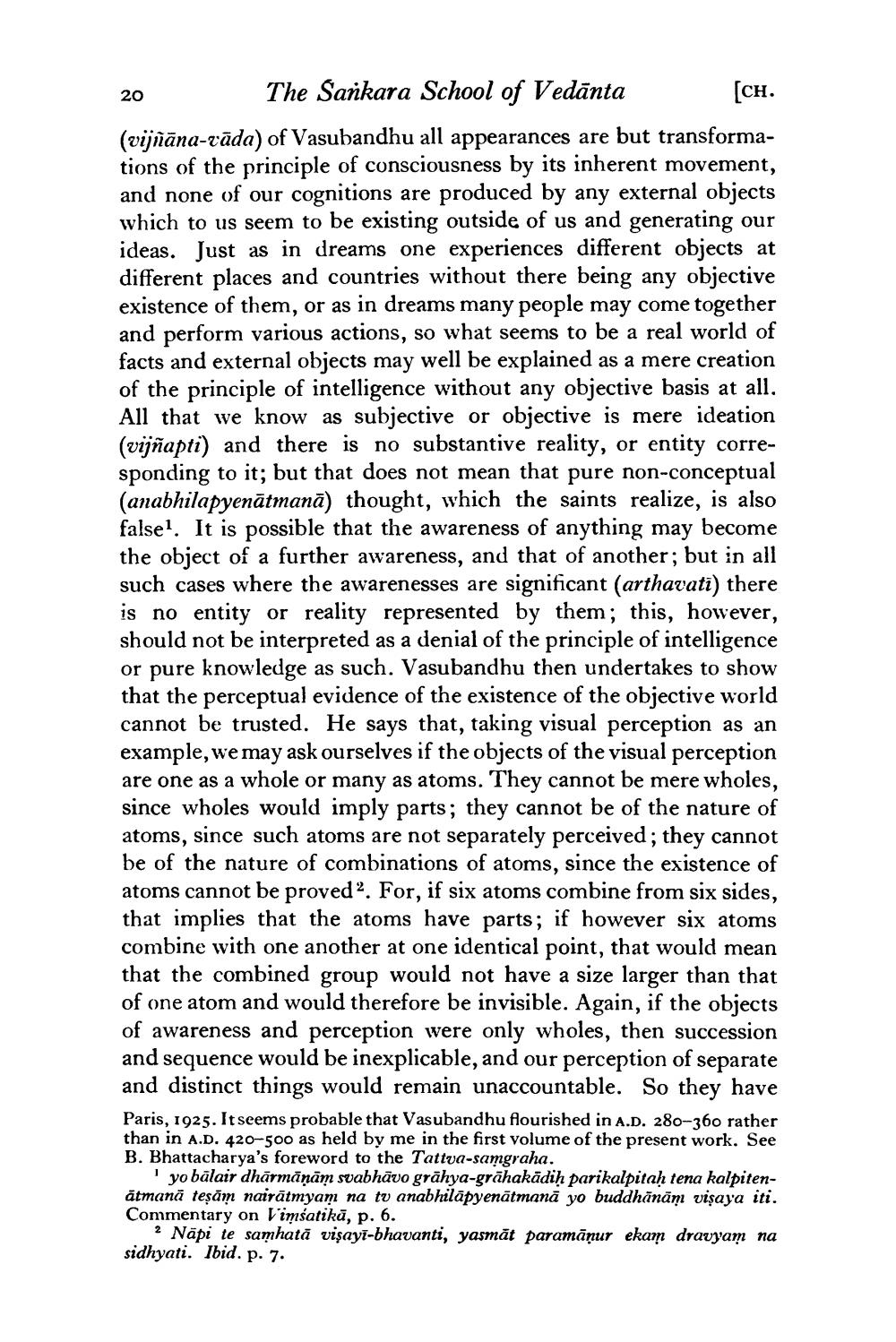________________
20
The Sankara School of Vedānta (CH. (vijñāna-vāda) of Vasubandhu all appearances are but transformations of the principle of consciousness by its inherent movement, and none of our cognitions are produced by any external objects which to us seem to be existing outside of us and generating our ideas. Just as in dreams one experiences different objects at different places and countries without there being any objective existence of them, or as in dreams many people may come together and perform various actions, so what seems to be a real world of facts and external objects may well be explained as a mere creation of the principle of intelligence without any objective basis at all. All that we know as subjective or objective is mere ideation (vijñapti) and there is no substantive reality, or entity corresponding to it; but that does not mean that pure non-conceptual (anabhilapyenātmanā) thought, which the saints realize, is also false'. It is possible that the awareness of anything may become the object of a further awareness, and that of another; but in all such cases where the awarenesses are significant (arthavati) there is no entity or reality represented by them; this, however, should not be interpreted as a denial of the principle of intelligence or pure knowledge as such. Vasubandhu then undertakes to show that the perceptual evidence of the existence of the objective world cannot be trusted. He says that, taking visual perception as an example, we may ask ourselves if the objects of the visual perception are one as a whole or many as atoms. They cannot be mere wholes, since wholes would imply parts; they cannot be of the nature of atoms, since such atoms are not separately perceived; they cannot be of the nature of combinations of atoms, since the existence of atoms cannot be proved 2. For, if six atoms combine from six sides, that implies that the atoms have parts; if however six atoms combine with one another at one identical point, that would mean that the combined group would not have a size larger than that of one atom and would therefore be invisible. Again, if the objects of awareness and perception were only wholes, then succession and sequence would be inexplicable, and our perception of separate and distinct things would remain unaccountable. So they have Paris, 1925. It seems probable that Vasubandhu flourished in A.D. 280-360 rather than in A.D. 420-500 as held by me in the first volume of the present work. See B. Bhattacharya's foreword to the Tattva-samgraha.
yo bālair dhārmāņām svabhāvo grāhya-grāhakādih parikalpitah tena kalpitenātmană teşām nairātmyam na tv anabhilāpyenātmanā yo buddhānām vişaya iti. Commentary on l'imšatikā, p. 6.
? Näpi te samhatā vişayi-bhavanti, yasmāt paramāņur ekam dravyam na sidhyati. Ibid. p. 7.




